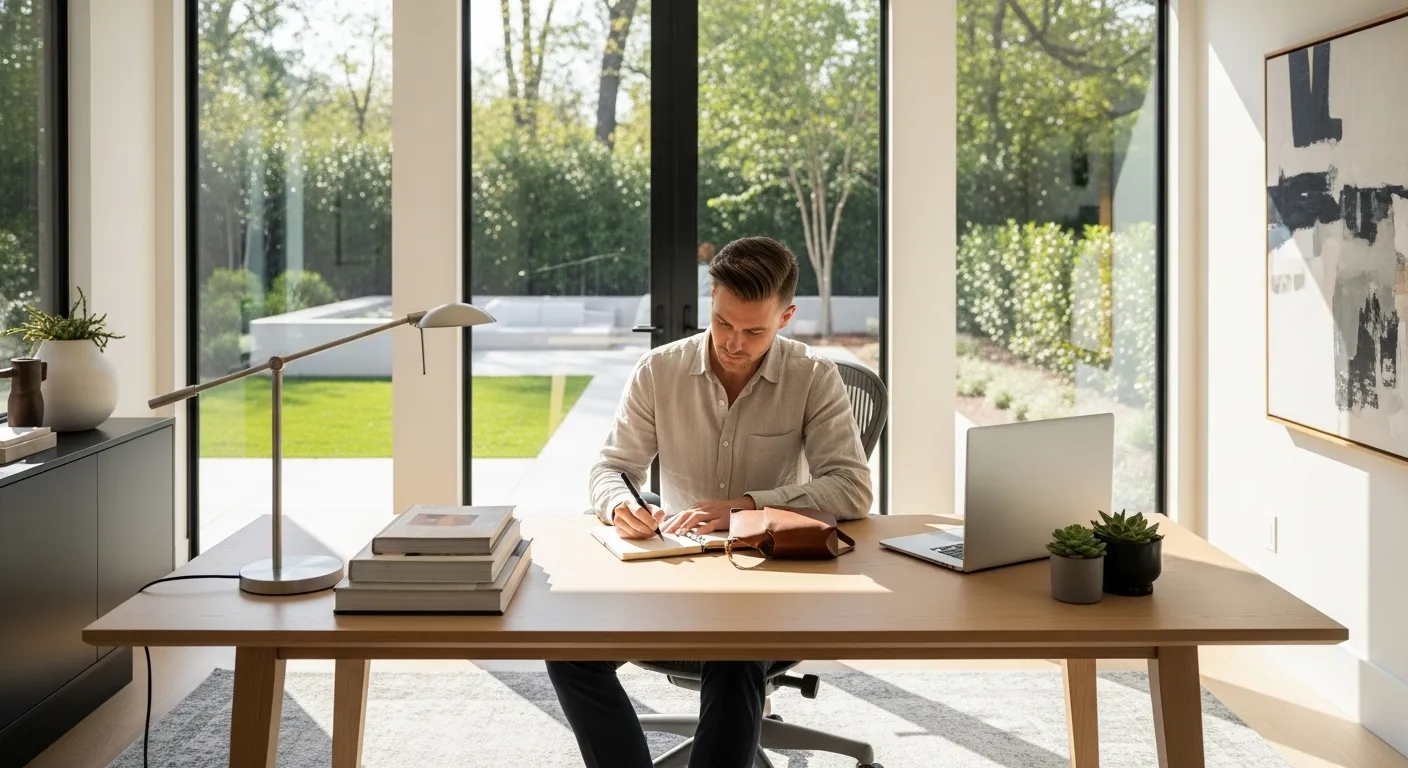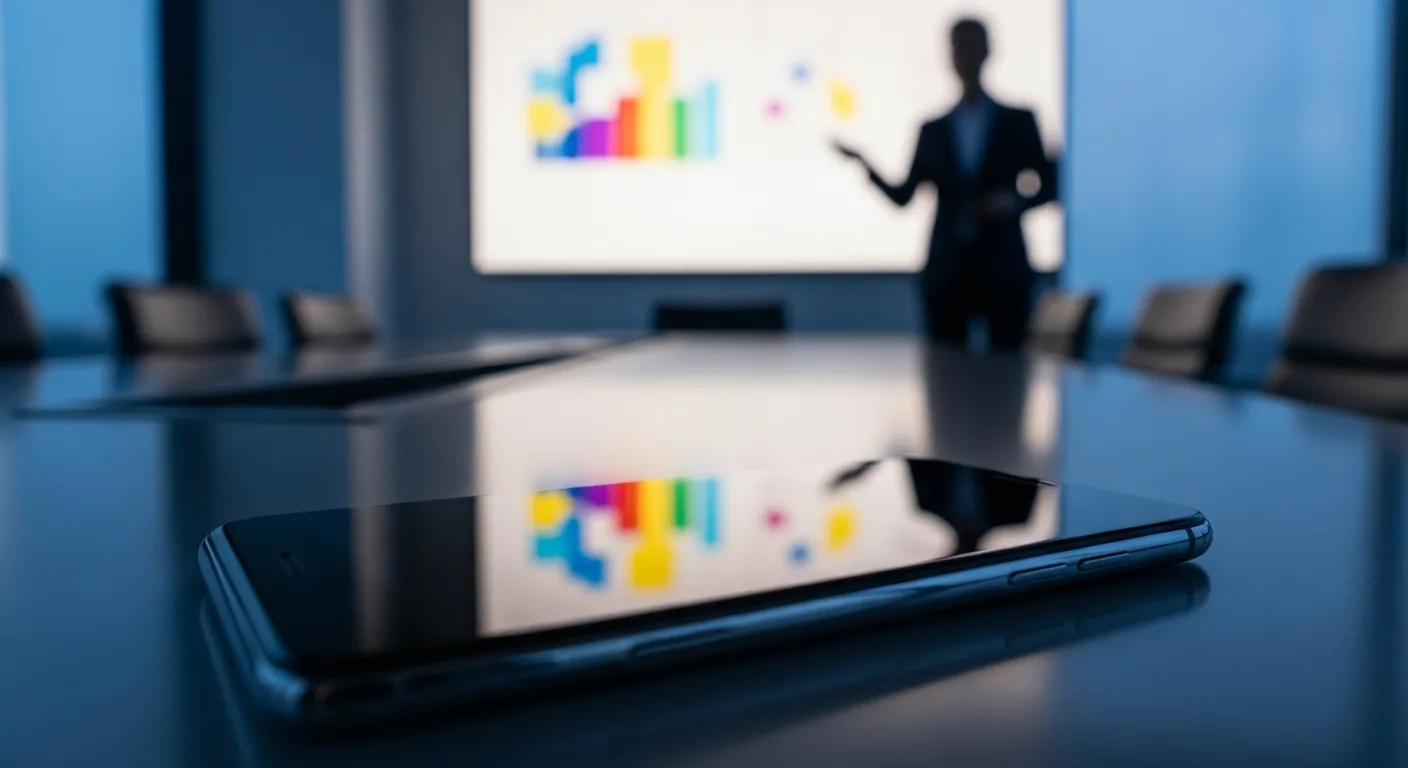
Do you ever reach the end of a long day feeling exhausted, yet when you look back, you can’t pinpoint what you actually accomplished? You felt busy. You answered emails, responded to messages, and scrolled through feeds. But the deep, meaningful work—the projects that move your career or personal goals forward—remains untouched. If this sounds familiar, you are not alone. It’s a modern paradox: we have access to more productivity tools than ever before, yet we often feel less productive.
The culprit isn’t a lack of willpower or a personal failing. It’s a series of small, almost invisible digital habits that have been carefully engineered to capture our most valuable resource: our attention. These are the productivity killers that operate in the background of our lives, silently chipping away at our focus, creativity, and overall well-being.
Many articles on this topic will tell you to quit social media, delete all your apps, and trade your smartphone for a flip phone. But we at The Focused Method believe in a more balanced and sustainable approach. You don’t need to abandon technology to reclaim your productivity. You simply need to understand how it influences your behavior and build intentional, mindful boundaries.
This article is your guide to identifying those bad digital habits and replacing them with systems that work for you, not against you. We’ll explore the psychology behind digital distraction, provide practical routines for your devices and environments, and offer real-world solutions for the challenges you’ll face along the way. It’s time to stop letting your technology manage you and start managing your technology.
📚 Table of Contents
- Understanding the Invisible Tug: How Your Attention is Captured
- Reclaiming Your Focus: Practical Digital Routines
- Master Your Notifications with Triage and Batching
- Design a Mindful Home Screen
- The Power of App Timers and Focus Modes
- Creating Your Sanctuary: Optimizing Your Physical Environments
- The Importance of Screen-Free Zones
- Crafting a Sleep-Friendly Evening Routine
- Establishing Deep Work Cues
- Putting It Into Practice: Two Worked Examples
- Navigating the Bumps: Troubleshooting Common Challenges
- When You “Relapse” and Scroll for an Hour
- Handling the Fear of Missing Out (FOMO)
- Managing Social and Professional Expectations
- Frequently Asked Questions About Digital Habits
- Are the apps that track your screen time a privacy risk?
- I work a night shift. How do I adapt this advice?
- How can I apply these principles to my children’s screen time?
- My job requires me to be constantly available. What can I do?
- Is it possible to have good digital habits?
- Your First Steps to a More Focused Week
Understanding the Invisible Tug: How Your Attention is Captured
To change our digital habits, we first need to understand why they are so powerful. Our brains are wired to seek rewards, and modern technology has become exceptionally good at providing them. This isn’t a nefarious plot, but rather the result of a business model centered on engagement. The more time you spend on an app, the more valuable you are to that platform.
This dynamic is often powered by something psychologists call a “dopamine loop.” Dopamine is a neurotransmitter in the brain that plays a major role in motivation and reward. When you do something pleasurable, like eating a delicious meal or receiving a compliment, your brain releases dopamine, which makes you feel good and encourages you to repeat the behavior.
Digital platforms have perfected the art of triggering this cycle. Think about the last time your phone buzzed. That buzz is a cue. Your learned routine is to check the phone. The reward might be a “like” on your photo, a new follower, or an interesting headline. Even if the notification is unimportant, the possibility of a reward is enough to keep you checking. This creates a variable reinforcement schedule—much like a slot machine—that is highly addictive. The uncertainty of the reward makes the habit even more compelling.
This is why you find yourself mindlessly opening an app without even thinking about it. Your brain has been trained to seek that potential dopamine hit. According to research referenced by institutions like the American Psychological Association, these reward-seeking behaviors can become deeply ingrained and difficult to break.
App designers use several clever techniques to strengthen this loop. The “pull-to-refresh” gesture mimics the action of pulling a lever on a slot machine, creating a moment of anticipation. The red dot on a notification badge creates a sense of urgency and an open loop that our brains feel compelled to close. Infinite scroll eliminates any natural stopping point, making it easy to keep consuming content long after you intended to stop.
These are not just features; they are psychological tools designed to hold your attention. Recognizing this is the first step toward regaining control. When you understand that your urge to check your phone isn’t a random impulse but a conditioned response, you can begin to consciously dismantle it. These aren’t just bad habits; they are trained behaviors. The good news is that any behavior that can be learned can also be unlearned and replaced with more intentional digital habits.

Reclaiming Your Focus: Practical Digital Routines
Changing your digital habits isn’t about grand, sweeping gestures. It’s about implementing small, consistent routines that create friction for distracting behaviors and clear the path for focused work. By redesigning how you interact with your devices, you can transform them from productivity killers into powerful tools. Let’s explore some of the most effective routines you can start today.
Master Your Notifications with Triage and Batching
Constant notifications are the single biggest threat to deep work. Each buzz, ping, or banner pulls you out of your current task, and studies from organizations like the American Psychological Association have shown it can take over 20 minutes to regain your original level of focus after an interruption. The solution is to move from a reactive to a proactive relationship with your notifications.
First, perform a notification audit. Go into your phone’s settings and turn off notifications for every single app that is not absolutely critical for your work or personal safety. Be ruthless. Do you really need to know that someone liked your comment right now? Does a news app need to break your concentration with a headline you can read later? For most people, the only essential notifications are phone calls, text messages from key contacts, and calendar alerts.
Next, implement a strategy called notification batching. This is the practice of checking your notifications at predetermined times rather than as they arrive. For example, you might decide to check your email and messages at 10:00 AM, 1:00 PM, and 4:00 PM. Outside of these windows, your phone remains a tool you use on your terms, not a device that constantly demands your attention.
To support this, become best friends with DND (Do Not Disturb) mode. DND is a feature on all modern smartphones that silences all calls, alerts, and notifications. You can schedule it to turn on automatically during work hours or your evening wind-down. Crucially, you can also create exceptions, allowing calls or messages from specific contacts (like family members) to come through, so you don’t have to worry about missing a true emergency.
Design a Mindful Home Screen
Your phone’s home screen is some of the most valuable real estate in your digital life. If it’s cluttered with tempting, time-wasting apps, you are setting yourself up for distraction every time you unlock your device. A minimalist home screen acts as a powerful barrier against mindless scrolling.
Start by removing all social media, news, and entertainment apps from your home screen. Move them into a folder on the second or third page. This small amount of friction—having to swipe and tap into a folder to find the app—is often enough to make you pause and ask, “Do I really want to open this right now?”
Take it a step further by deleting apps you rarely use or that consistently make you feel worse after using them. If you need to access a service like Facebook or Twitter, try using the mobile web browser instead of the app. The browser experience is often clunkier and less engaging, which is exactly what you want.
Your goal is to turn your phone from a source of entertainment into a utility. Fill your home screen with tools that serve your goals: a calendar widget, a to-do list app, a meditation app, or your camera. When you glance at your phone, you should be reminded of your intentions, not tempted by distractions.
The Power of App Timers and Focus Modes
Modern operating systems on both iOS and Android come with powerful built-in digital wellness tools. These are not punishments but supportive features designed to help you align your digital behavior with your goals.
Use app timers to set daily limits for your most problematic apps. If you know you lose hours to Instagram, set a timer for 20 minutes per day. When your time is up, the app will be blocked. This isn’t about never using the app again; it’s about making your usage conscious and finite. You’ll be amazed at how this simple limit changes your behavior, encouraging you to get the most value out of the app in the short time you have.
Explore your phone’s “Focus Mode” settings. These allow you to create different profiles for different contexts, such as “Work,” “Personal,” or “Sleep.” For your “Work” focus mode, you could allow notifications only from your boss and your project management app, while blocking everything else. Your home screen can even change dynamically based on the focus mode, showing you only work-related apps during the day. This is one of the most effective ways to reduce the mental load of constantly fighting digital temptations.

Creating Your Sanctuary: Optimizing Your Physical Environments
Improving your digital habits isn’t just about what you do on your phone; it’s also about how you structure the world around it. Your physical environment sends powerful cues to your brain about what behavior is expected. By consciously designing your spaces, you can make good digital habits feel effortless and bad digital habits feel inconvenient.
Think of it as architectural wellness. Just as an architect designs a building for a specific purpose, you can design your home and workspace to promote focus, relaxation, and connection. This is where you move from managing your device to truly managing your life with technology as a supporting player, not the main character.
The Importance of Screen-Free Zones
One of the most impactful changes you can make is to designate certain areas of your home as completely screen-free zones. The two most common and effective choices are the dinner table and the bedroom. These are spaces traditionally reserved for connection and rest, two things that are severely compromised by the presence of screens.
Making the dinner table a screen-free zone allows you and your family or partners to be fully present with one another. It encourages conversation and strengthens relationships. The meal becomes a time for genuine connection, not for scrolling through feeds while you eat. This simple rule can have a profound impact on your sense of well-being.
The bedroom is arguably the most critical space to protect from technology. Bringing phones, tablets, or laptops into bed not only introduces an endless source of distraction but also disrupts your ability to get restorative sleep. Your brain begins to associate your bed with the stimulating activities of work, social media, and news, rather than with rest and relaxation. By creating a firm rule—no screens in the bedroom—you send a clear signal to your brain that this space is for sleep and intimacy only.
Crafting a Sleep-Friendly Evening Routine
The quality of your sleep has a direct and significant impact on your productivity, mood, and overall health. Numerous studies, often cited by organizations like the National Institutes of Health (NIH), have linked poor sleep to decreased cognitive function. One of the biggest modern culprits of poor sleep is our evening screen time.
Our devices emit blue light, a type of light on the visible spectrum with a short wavelength. Exposure to blue light in the evening can suppress the body’s production of melatonin, the hormone that signals to your brain that it’s time to sleep. According to experts at the Sleep Foundation, this can shift your body’s internal clock, making it harder to fall asleep and reducing the quality of the sleep you do get.
To counteract this, establish a “digital sunset.” This means putting away all screens at least 60-90 minutes before you intend to go to sleep. Use this time for calming, analog activities. Read a physical book. Listen to music or a podcast. Do some light stretching. Talk with your partner. Journal about your day. This buffer period allows your brain to unwind and your body to begin producing melatonin naturally.
Charge your phone overnight in a different room, like the kitchen or living room. This removes the temptation to check it if you wake up in the middle of the night and ensures that your alarm in the morning is not an excuse to immediately start scrolling from bed.
Establishing Deep Work Cues
Just as you can design your environment for rest, you can design it for focus. When it’s time for deep work, create a small ritual that signals to your brain that it’s time to concentrate. These environmental cues can help you transition into a state of flow more quickly.
Your deep work ritual could be as simple as closing all unnecessary browser tabs, turning on a specific playlist of instrumental music, and, most importantly, putting your phone completely out of sight. Don’t just turn it face down on your desk. Put it in a drawer, in your bag, or in another room. The physical act of removing the source of distraction is incredibly powerful. The “out of sight, out of mind” principle works wonders for preserving focus. These small, consistent actions build a strong association between your workspace and uninterrupted productivity.

Putting It Into Practice: Two Worked Examples
Theory is important, but practical application is where real change happens. It can be difficult to imagine how these principles fit into a busy life. To make this advice more concrete, let’s walk through two detailed, realistic examples: a simple evening wind-down routine and a balanced weekend digital detox plan.
A 10-Minute Evening Wind-Down
The goal of an evening wind-down is to create a clear separation between your “online” day and your “offline” night. This helps your brain and body prepare for restful sleep, which is essential for next-day productivity. This routine is designed to be short, simple, and effective.
Time: 9:30 PM (or 60 minutes before your desired bedtime)
Step 1: The Final Check (2 minutes). Acknowledge the need for one last look. Quickly check for any urgent messages. Set your alarm for the next morning. Once that is done, the phone is now a tool that has served its final purpose for the day.
Step 2: The Physical Separation (1 minute). This is the most crucial step. Take your phone and plug it into its charger in a location outside of your bedroom. This could be the kitchen counter, your home office desk, or a charging station in the living room. The physical act of leaving it behind is a powerful psychological cue.
Step 3: Prepare for Tomorrow (3 minutes). With your mind now free from digital inputs, do one small thing to make your morning easier. Lay out your clothes for the next day. Pack your gym bag. Write a short to-do list with your top three priorities. This reduces morning anxiety and helps you start the day with clarity.
Step 4: The Analog Activity (4 minutes). Spend the remaining time on a screen-free activity. This doesn’t have to be a major commitment. Read four pages of a physical book. Do some gentle stretching. Write a few sentences in a journal about your day. The goal is simply to allow your mind to quiet down without the stimulation of a screen.
That’s it. In just ten minutes, you have successfully created a boundary, prepared for sleep, and reduced the likelihood of mindless nighttime scrolling.
A Realistic Weekend Digital Detox
The term “digital detox” often brings to mind a 48-hour period with no technology whatsoever. For most people living in a connected world, this is neither practical nor desirable. A more realistic approach focuses on intentionality rather than abstinence.
Goal: To use technology as a tool, not as a source of passive entertainment, for one weekend day.
Morning (9 AM – 12 PM): Protected Time. The first few hours of a weekend day are often lost to scrolling in bed or on the couch. Instead, commit to keeping your phone on Do Not Disturb until a set time, like 10 AM. Use this protected time for something you truly enjoy: going for a walk, reading the newspaper, cooking a nice breakfast, or playing with your kids or pets. When you do check your phone at 10 AM, set a 10-minute timer for your social media and news check-in.
Afternoon (12 PM – 5 PM): Utility, Not Distraction. If you’re going out, your phone is a valuable tool. Use it for navigation with Google Maps, for listening to a podcast in the car, or for coordinating with the friends you’re meeting. The rule is to use it with purpose. When you are with others or engaged in an activity, put the phone away. Don’t pull it out to check work email or scroll through Instagram while waiting in line for coffee. Be present in your physical environment.
Evening (5 PM onwards): Intentional Connection. In the evening, technology can be a wonderful way to connect. Use it to FaceTime with a family member who lives far away or to look up a new recipe to cook for dinner. If you decide to watch a movie, make it an intentional choice. Pick the movie beforehand, put your phone away, and give the film your full attention, rather than “second-screening” by scrolling on your phone simultaneously.
By the end of the day, you haven’t abandoned technology. You’ve simply used it on your own terms, which is the ultimate goal of building healthier digital habits.

Navigating the Bumps: Troubleshooting Common Challenges
Building new habits is a journey, not a destination. There will be moments of frustration and days when you fall back into old patterns. This is completely normal. The key to long-term success is not perfection, but resilience and self-compassion. Here’s how to handle some of the most common challenges you might face.
When You “Relapse” and Scroll for an Hour
It will happen. You’ll sit down to check one quick thing, and an hour later, you’ll look up from your phone, dazed and frustrated. The most important thing to do in this moment is to avoid shame and guilt. Berating yourself is counterproductive and only reinforces a negative cycle.
Instead, treat it as a learning opportunity. Get curious. Ask yourself: What was the trigger? Was I feeling bored, anxious, or lonely? Was I procrastinating on a difficult task? Understanding the underlying emotion that led to the mindless scrolling is the key to preventing it in the future. If you were procrastinating, maybe the solution is to break the task into smaller steps. If you were lonely, perhaps the answer is to schedule a call with a friend. Use the “relapse” as data, not as a reason to give up.
Handling the Fear of Missing Out (FOMO)
One of the biggest psychological barriers to reducing screen time is the fear of missing out. We worry we’ll miss an important news story, a viral meme, or an invitation from friends. This anxiety is intentionally cultivated by social media platforms that want you to stay constantly engaged.
To combat FOMO, try to reframe it. First, remember that truly important information has a way of finding you. If something major happens in the world or in your social circle, you will hear about it through a text, a call, or a conversation. You don’t need to be monitoring feeds 24/7.
Second, focus on what you gain, not what you might be missing. By being less connected online, you are more connected to your immediate reality. This is sometimes called JOMO, or the “Joy of Missing Out.” It’s the pleasure of being present in your own life, focused on your own goals, and engaged with the people right in front of you. The shallow updates you miss online are a small price to pay for the depth of experience you gain offline.
Managing Social and Professional Expectations
Sometimes the pressure to be constantly available comes from others. A friend might get annoyed if you don’t reply to a text within minutes, or your boss might send emails at all hours. Navigating these expectations requires clear but gentle communication.
You don’t need to make a grand announcement, but you can set expectations in subtle ways. For friends and family, you can simply say, “Hey, I’m trying to be on my phone less, so if you don’t hear back from me right away, that’s why. If it’s urgent, please call!” Most people will understand and respect this boundary.
With work, it can be trickier, but it’s still manageable. Start by observing the true expectations. Does your boss actually expect an immediate reply at 9 PM, or is that a pressure you’re putting on yourself? If the expectation is real, you may need to have a conversation about communication norms. If it’s self-imposed, you can start training your colleagues by simply not responding to non-urgent emails outside of work hours. Your actions will slowly reset their expectations over time. Protecting your off-hours is crucial for preventing burnout and maintaining long-term productivity.

Frequently Asked Questions About Digital Habits
As you begin to implement these changes, questions will naturally arise. Here are answers to some of the most common queries we receive about building healthier, more productive relationships with technology.
Are the apps that track your screen time a privacy risk?
This is a valid concern. When it comes to third-party apps, it’s always wise to be cautious. Read their privacy policies and see what data they collect and how they use it. However, the best place to start is with the tools already built into your phone’s operating system. Both Apple’s “Screen Time” and Google’s “Digital Wellbeing” are integrated at the system level, offering robust tracking and controls without sending your data to an external company. We recommend using these native tools first, as they provide excellent functionality with a higher degree of privacy protection.
I work a night shift. How do I adapt this advice?
All of the principles in this article are adaptable to any schedule. The key is to think in terms of cycles, not specific times of day. A “digital sunset,” for example, is about creating a screen-free buffer before you sleep, whether that’s at 10 PM or 10 AM. Your “work” focus mode should be active during your working hours, whatever they may be. The goal is to create clear boundaries between work time, personal time, and rest time, according to your unique body clock and professional schedule. The core concepts of notification batching, screen-free zones, and intentionality apply universally.
How can I apply these principles to my children’s screen time?
These strategies are highly effective for families and can be adapted into parental controls. The concepts of screen-free zones (especially the dinner table and bedrooms) and a “digital sunset” are fundamental for children’s healthy development. The most important step is to model the behavior you want to see. When your children see you putting your phone away and being present, it becomes a normal family culture. Involve older children in the process of setting rules and app timers; when they have a say in creating the boundaries, they are more likely to respect them.
My job requires me to be constantly available. What can I do?
This is a tough situation faced by many professionals, from doctors to customer support agents. When you cannot disconnect completely, focus on what you can control. The strategy shifts from creating large, uninterrupted blocks of time to fiercely protecting small ones. Can you take a 15-minute lunch break without your phone? Can you turn off work-related notifications for the first 30 minutes after you get home to reconnect with your family? Even small, protected windows of non-availability can help reduce stress and prevent burnout. Focus on high-quality breaks and be disciplined about protecting your non-work hours, even if they are fragmented.
Is it possible to have good digital habits?
Absolutely. The goal of digital wellness is not to eliminate technology but to harness its power for good. Technology can be a phenomenal tool for learning, creating, and connecting. A good digital habit is any use of technology that is intentional, mindful, and aligns with your values. Using an app to learn a new language, video-calling a loved one, using a project management tool to organize a complex task, or following an artist who inspires you—these are all positive, healthy uses of technology. The problem arises when our use becomes mindless, passive, and compulsive. The goal is to shift the balance from mindless consumption to intentional creation and connection.

Your First Steps to a More Focused Week
We’ve covered a lot of ground, from the psychology of distraction to the practical design of your daily routines. It can feel overwhelming, but remember that progress is made through small, incremental changes, not a complete life overhaul. The goal is not perfection; it’s intention. It’s about taking back control, one habit at a time, and building a digital life that serves your real one.
You don’t need to implement everything at once. In fact, you’ll be more successful if you don’t. Choose a few small, manageable changes you can commit to this week. As you experience the benefits of increased focus and calm, you’ll be motivated to continue building on that foundation.
Here are three simple actions you can take this week to start your journey:
- The One-App Shuffle: Choose your single most distracting app—the one you open instinctively when you’re bored. Move its icon off your main home screen and into a folder on the second page. This tiny bit of friction is the first step in breaking the habit.
- The 15-Minute Timer: The next time you open a social media or news app, set a 15-minute timer before you start scrolling. When the timer goes off, close the app. This helps you become more aware of how quickly time can pass and introduces a clear stopping point.
- The Screen-Free Meal: Designate just one meal per day—breakfast, lunch, or dinner—as a completely screen-free zone. Put your phone in another room and focus on your food and the people you’re with, or simply on your own thoughts.
These small steps are the building blocks of a more focused, productive, and balanced life. By starting here, you are planting the seeds for a healthier relationship with technology, one that empowers you to do your best work and live your best life.
Disclaimer: The information provided in this article is for educational and informational purposes only and is not intended as a substitute for professional medical or psychological advice, diagnosis, or treatment. Always seek the advice of your physician or other qualified health provider with any questions you may have regarding a medical condition.






